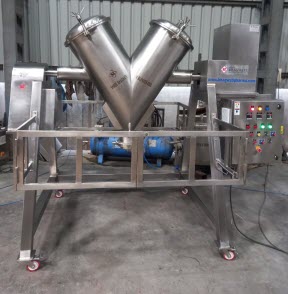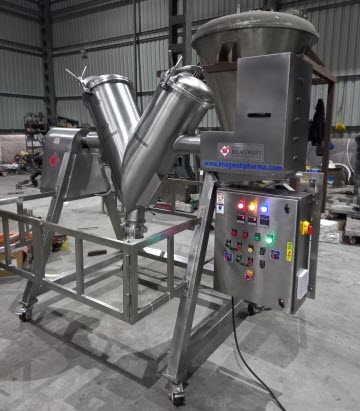Maintenance Best Practices for V Blenders: Ensuring Long-Term Reliability
V blenders, widely used in various industries for mixing dry powders and granules, play a crucial role in manufacturing processes. To maximize the longevity and reliability of these essential blending machines, proper maintenance is paramount. This article provides valuable insights into best practices for maintaining V blenders, ensuring optimal performance throughout their operational life.
Understanding V Blenders
V blenders are versatile blending machines characterized by their V-shaped design. These blenders are commonly employed in pharmaceutical, food, and chemical industries for homogenously mixing dry ingredients. Understanding the intricacies of V blenders is the first step towards effective maintenance.


Significance of Maintenance
Regular maintenance significantly impacts the performance and lifespan of V blenders. Implementing proper maintenance practices helps prevent unexpected breakdowns, reduces downtime, and ultimately saves on costly repairs. The investment in maintenance pays off in the form of consistent and reliable blender operation.
Daily Inspection Routine
A daily visual inspection routine is crucial for identifying potential issues early on. This includes checking for loose bolts, unusual vibrations, and any signs of wear. Addressing these issues promptly can prevent them from escalating into more significant problems.
Cleaning and Sanitization Practices
Maintaining a clean environment is essential for V blender longevity. Regular cleaning using appropriate agents ensures that the blender operates in a hygienic condition, especially in industries where product contamination is a concern.
Lubrication Requirements
Proper lubrication is vital for the smooth operation of V blenders. Understanding the types of lubricants suitable for different components and adhering to a regular lubrication schedule helps prevent friction-related issues and extends the life of moving parts.
Checking for Wear and Tear
Regularly monitoring the wear and tear of blades, seals, and other components is crucial. Identifying and replacing worn-out parts in a timely manner prevents unexpected breakdowns during operation.
Alignment and Calibration
Efficient blending relies on proper alignment of V blender components. Regularly checking and adjusting alignment ensures that the blender operates at peak efficiency. Additionally, calibrating settings for specific materials being processed enhances overall performance.
Handling Potential Contaminants
Identifying and mitigating the risk of contamination is essential, especially in industries with stringent quality standards. Implementing preventive measures, such as installing proper seals and filters, helps maintain product integrity.
Troubleshooting and Diagnostics
Establishing a systematic approach to troubleshooting issues is crucial for minimizing downtime. Utilizing diagnostic tools and following a step-by-step process can expedite the identification and resolution of problems.
Training Maintenance Personnel
The importance of well-trained maintenance staff cannot be overstated. Ongoing education on V blender technologies and best practices ensures that maintenance personnel are equipped to handle routine inspections and address complex issues.
Documentation and Record-Keeping
Maintaining detailed records of maintenance activities is essential for effective management. This includes documenting inspections, repairs, and any modifications made to the equipment. Utilizing this data aids in predictive maintenance planning and decision-making.
Upgrading and Retrofitting Options
Periodically assessing the feasibility of equipment upgrades is a proactive approach to maintenance. Retrofitting with modern components and technologies can enhance the performance and efficiency of V blenders, extending their operational life.
Adherence to Manufacturer Guidelines
Following the manufacturer’s guidelines for maintenance is fundamental. This includes recommended schedules for inspections, lubrication, and any specific requirements outlined in the equipment manual. Adherence to these guidelines also ensures warranty considerations and manufacturer support.
Conclusion
In conclusion, adopting a comprehensive approach to maintenance is crucial for ensuring the long-term reliability of V blenders. From daily inspections to proactive troubleshooting and upgrades, each practice contributes to the overall performance and efficiency of these essential blending machines. By incorporating these best practices, industries can maximize the lifespan of their V blenders and optimize production processes.
















